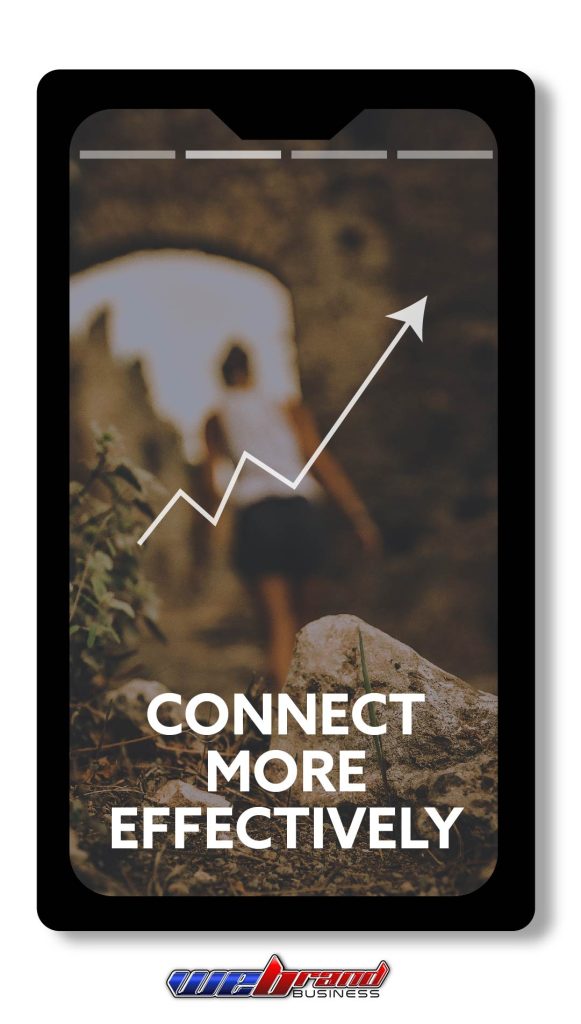Google Web Stories: How to create and publish engaging content
We all know that feeling. You’re reading an article, and you can tell the author is just trying to fill up space until they hit their word count. The piece drones on and on, never really getting to the point. It’s frustrating, right?
Google wants to help you avoid those articles with its new Web Stories feature. With this addition, users can create content that feels like it was written specifically for them- because it was!
Stories that feel like yours, because they are
Web Stories are designed to be visual and concise, so your readers will understand your message right away. Plus, they’re easy to read on any device- no zooming in necessary! And if you need a little more space for your text, no problem: Web Stories offer a variety of customization options when it comes to adding links, CTA’s and ads.
Best of all? Captions are now supported in Web Stories! So if you want to add subtitles or translations for your non-English speaking viewers, go ahead and do so using the WordPress plugin.
How Web Stories Work
Google Web Stories are a great way to create and publish engaging content. You can use them to share your story with the world, and they’re easy to edit and customize before you publish them on Refinery29’s site.
To get started, think about what you want the audience to see and hear. Then, use a visual medium like video, illustrations, or pictures to bring your story to life. Once you’ve created your story, be sure to edit and customize it before publishing it on our site.
Google Web Stories are created by a variety of authors for different types of online experiences. However, all of them use AMP–which has been designed specifically for creating engaging content that looks great on all devices. This story is an excellent example of responsive storytelling: it’s easy to read on tablets and desktops as well as mobile devices.
Get your message in front of new targeted customers online
Google is constantly changing and evolving, so it’s important to stay up-to-date on the latest changes in order to ensure that your content is being seen by the right people. With the release of Google Stories, there are now new ways to get your story in front of more people than ever before.
One great way to take advantage of this new feature is by using the pre-made layouts to quickly create interactive stories. This will give you an edge over other content out there and help you attract more readers. You also have access to a large library of free images, videos, and GIFs that you can use in your stories.
Web Stories and SEO | A Win-Win for Marketing Teams
Another way to get your story in front of more people is by optimizing it for SEO purposes. The Washington Post found a way to boost the SEO of their website by creating stories that are available on the web. You can do something similar for your website or blog and see similar results.
Google algorithms have a lot to do with how your content is viewed, so it’s important to keep them in mind when publishing new material. By following these simple tips, you can ensure that your story will be seen by as many people as possible
Make the most of your Story
Google Web Stories is a great way to create and publish engaging content. However, there are a few things to keep in mind in order to make the most of your Story.
First, be sure to fill out all the suggested settings before publishing. This will help ensure that your story looks its best when it goes live.
Second, link to videos and products in your Story whenever possible. This will help keep people engaged and interested in what you have to say and also provide them a quick and easy way to reach the content, product or service you are offering straight from the story.
Third, integrate with ad networks, including both direct sold and programmatic ads, to make the most of your creative work. Ads can help you generate revenue from your stories while also increasing their reach.
Fourth, the options for the Story are available to be edited before publishing. Be sure to take advantage of this so that you can fine-tune your story until it’s just right.
Fifth, the Story can be published automatically or manually, with a slideshow of varying lengths possible. Choose what works best for you and your audience.
Sixth, always preview the story before publishing it – this allows you to see how it looks on different types of screens and makes sure that everything is as it should be, double check your links to make sure users end up where you need them and reduce confusion or a poor experience.
Finally, once all details are ready to go, publish your story and watch it take off!
Ways to get started with Web Stories
There are a variety of ways to get started with creating content. Perhaps the most popular way is to use WordPress. This software has a range of tools and guides to help you create the perfect story for your audience.
Another option is to use Prezi, which allows you to create engaging presentations that tell a story. This can be a great way to capture your audience’s attention and keep them engaged throughout the presentation.
Finally, another option is to use infographics. Infographics are a great way to present complex information in an easy-to-understand format. They can also be shared online easily, allowing you to reach a wider audience with your content.
What are Web Stories?
Goodbye AMP Stories, hello Web Stories
Google announced back in March of 2019 that they would be sunsetting AMP Stories. However, this doesn’t mean that the AMP format is going away – Google is simply rebranding AMP Stories as “Web Stories.”
The main difference between AMP Stories and Web Stories is that the latter will not require an AMP document to function. This means that brands and publishers will now have more control over their content, without having to worry about creating a separate AMP page.
Additionally, Google has released a plugin for Web Story content which will help you track how your stories are performing. This can be especially helpful in developing new stories and gauging their audience’s reaction.
Overall, while the change from AMP Stories to Web Stories may seem small, it represents a big step forward for users who want more control over their web experience. This brings much of social media’s success with stories right to your website.
What Are Google Web Stories On WordPress?
Google web stories are a way to create and publish engaging content that can be explored by tapping through it or swiping to hop on to the next piece of content. Media brands including ABC, Tastemade, and Fox News Channel are using these stories. They can be shared on Instagram, Snapchat, and Facebook.
Stories are visual posts that consist of slides, images and text with a few other effects. They are precise and can tell a lot in just a few minutes.
Web Stories for WordPress Plugin
If you’re looking for an easy way to create and publish engaging content on your WordPress website, look no further than the Web Stories for WordPress Plugin. This free plugin can be installed directly from the Plugins menu of your site, and it makes creating web stories a breeze. With built-in support for Google’s robust user-friendly editor, you’ll be able to create beautiful web stories that will engage your visitors and help monetize your site.
Steps To Create Google Web Stories On WordPress
1. Install the Google Web Stories plugin.
2. Create and publish your first story.
3. Add text, shapes, and layouts to your stories.
4. Publish your stories to WordPress sites or on social media platforms with a click of a button.”
Add Schema To Make Your Google Web Story On WordPress Recognizable
If you want to ensure that your Google Web Story on WordPress will be easily recognizable by the search engine, then you need to add schema markup. Schema is a tool that helps to make your website recognizable by Google, and it’s something that can be added quite easily. All you have to do is mark pages on your site in the Schema editor and add relevant information such as author, date published or updated, etc.
There are stand-alone WordPress plugins that will help you add schema to your stories, so this process is made even simpler. By adding schema markup, you’ll make sure that your content is given the best chance possible of being found by people conducting searches on Google.
Why Is there A Need for Structured Data?
One of the main reasons for using structured data is to help search engines better understand your website. When you use Schema, you are marking up your content with code that tells the bot what the webpage is about. This helps the bot see the structure of your site, and it can index your pages more accurately.
Another reason to use structured data is so that users can see relevant information about your content when they search on Google. For example, if you have a page about a product, you can use schema to mark up the page with information about the product such as name, price, description, and images. When someone searches for that product on Google, they will be able to see all of this information in addition to links to purchase it online.
Finally, using structured data can also help improve your website’s SEO (search engine optimization). By providing more accurate and relevant information to bots crawling your website, you are telling them that your site is worth ranking higher in search results.
Google Web Story On WordPress And SEO
Google’s Web Story platform is a great way to create and publish engaging content. Not only does it help with SEO, but it also integrates well with social media platforms like Facebook, Instagram, Snapchat, Twitter and many more.
In order to make the most of Google’s Web Story platform, be sure to use the WordPress plugin. This will allow you to take advantage of automatic schema.org and social meta-data generation. While this data should be reviewed before publishing a story, it can be helpful in ensuring that your content is seen by as many people as possible.
How to build Web Stories with the WordPress plugin
The Web Stories plugin is an easy way to get started creating engaging content for your website. You can join the public beta of the plugin to get started building stories today.
With the Web Stories plugin, you can create and manage your own stories right from your WordPress site. The interface has a blank template that you can use to start building out your story. Upload images with the blue button, and explore their properties and design options on the right-hand side. You can also adjust the text size using HTML headings.
To publish your story, fill in metadata such as title and tags before publishing. You can also duplicate existing pages or link out to your own content within your web story.
Create Beautiful Stories
Google Web Stories is an easy to use platform that allows you to create beautiful, engaging stories. With just a few clicks, you can have your story up and running in no time!
The editor is simple and easy to use, with many options and effects available for you to choose from. You’ll be able to create interactive stories that will keep your readers engaged the entire time.
Widgets are currently in development as an app, which will help create beautiful Google Web Stories on the go! This means that you’ll be able to tell your story anywhere, anytime.
Web Stories are perfect for publishers who want an easy way to share their content on the open web. The dashboard is intuitive and allows for creative expression and control, making it easy for publishers to share their stories with the world.
Create an immersive & interactive experience with Google Web Stories
Web Stories are a great way to create an immersive and interactive experience for your audience. With this tool, you can add animations, quizzes, and polls to make your story more engaging. Focus in on specific parts of your business to highlight key points and solutions your products/service provide. This format is perfect for brands who want to host visual content on their own website.
One of the benefits of using Web Stories is that they offer an alternative to creating a full-blown web site. They’re simpler to design and can be published more quickly. However, they do have some limitations – namely that you can’t include as much content as you would on a website.
Conclusion
DevOps has become increasingly popular in recent years, and it is proving to be a valuable tool for organizations. Many benefits come with this merger of two functions: agile teams, increased production throughput, faster deployment times, and better quality assurance (QA). In addition, this integration will undoubtedly help organizations see significant gains in their productivity, leading them into broader success as a company or industry.






